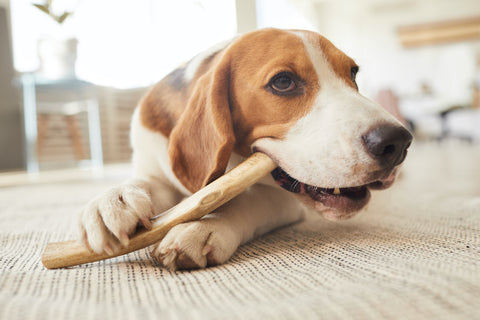Dog not eating food but eating treats
Pet owners often face the perplexing situation of their beloved dogs refusing their regular meals while eagerly devouring treats. It's a concerning scenario, considering the importance of a balanced diet for a dog's overall health and well-being.
Dogs, like humans, have preferences. The difference in taste, texture, and aroma between regular meals and treats could be a significant factor in their behavior. Additionally, external influences such as stress, changes in environment, or routine disruptions might contribute to their reluctance to eat their regular food.
When Your Dog Won't Eat Their Food but Loves Treats: Understanding the Issue

Common Reasons Why Dogs Won't Eat Their Food
Dogs refusing to eat their food can be concerning for pet owners. Several reasons might contribute to this behavior:
1. Health Issues:
Dental problems: Pain or discomfort while chewing might deter a dog from eating.
Gastrointestinal problems: Issues like nausea, digestive troubles, or infections can affect their appetite.
Illness or underlying medical conditions: Various illnesses can cause a loss of appetite in dogs.
2. Dietary Changes:
Abrupt changes in diet: Dogs might resist new food if it's introduced suddenly.
Spoiled food: If the food has gone bad or rancid, dogs may refuse to eat it due to the smell or taste.
3. Behavioral or Environmental Factors:
Stress or anxiety: Changes in routine, new surroundings, or anxiety-inducing situations can impact their appetite.
Attention-seeking behavior: Sometimes, dogs might refuse food to seek attention or out of stubbornness.
4. Food Preferences:
Dogs, like humans, can have preferences for certain flavors, textures, or brands of food.
Spoiled by treats: If they're accustomed to receiving treats frequently, they might hold out for those instead of regular food.
5. Age-Related Changes:
Elderly dogs might experience a decrease in appetite due to various age-related factors or health issues.
What to Do If Your Dog is Not Eating?
If your dog is not eating, here are some steps you can take to address the issue:
1. Monitor Behavior:
Observe your dog for any signs of illness or discomfort. Look for changes in behavior, energy levels, vomiting, diarrhea, or other unusual symptoms.
2. Check the Food:
Ensure the food hasn't gone bad or spoiled. Sometimes, changes in color, texture, or smell can deter dogs from eating.
3. Offer Variety:
Experiment with different flavors or types of dog food. Some dogs might have preferences for certain tastes or textures.
4. Stick to a Routine:
Maintain a consistent feeding schedule. Dogs thrive on routine, and having set meal times can encourage them to eat.
5. Avoid Feeding Table Scraps:
Refrain from offering human food or excessive treats, as this might lead to picky eating habits.
6. Create a Calm Feeding Environment:
Ensure the feeding area is peaceful and free from distractions. Dogs may avoid eating if they feel stressed or anxious.
7. Try Tempting Options:
Warm the food slightly or add some low-sodium broth to enhance the aroma and make it more appealing.
8. Encourage Exercise:
Regular exercise can stimulate a dog's appetite. Engage in physical activities to encourage them to eat.
9. Consult a Veterinarian:
If your dog's lack of appetite persists for more than a day or two, or if there are other concerning symptoms, seek veterinary advice. It's essential to rule out any underlying health issues.
10. Avoid Force-Feeding:
Never force-feed a dog. This can lead to more stress and may worsen the aversion to food.
Always keep an eye on your dog's overall behavior and health. If there's a prolonged lack of appetite or any accompanying symptoms, consulting a vet is crucial to identify and address any underlying health concerns.
Is It Okay If My Dog Only Eats Treats?
While treats can be a part of a dog's diet, relying solely on treats isn't ideal for their overall health. Treats are typically formulated differently from regular dog food; they're often higher in calories, fats, and sugars, and they lack the essential nutrients needed for a balanced diet.
Here are some considerations if your dog is only eating treats:
Nutritional Imbalance: Treats lack the necessary vitamins, minerals, and proteins essential for a dog's health. Over time, this imbalance can lead to deficiencies and health issues.
Weight Management: Treats tend to be calorie-dense. Depending on the quantity and frequency, this can lead to weight gain or obesity, causing additional health problems.
Dental Health: Some treats might not contribute to dental health in the same way that specially formulated dental chews or certain dog foods do. This can impact dental hygiene.
Behavioral Implications: If a dog is conditioned to only eat treats, it might become increasingly difficult to reintroduce regular food. This behavior could indicate pickiness or underlying health issues.
If your dog is solely eating treats, it's essential to encourage a transition back to a balanced diet:
Gradual Transition: Mix small amounts of their regular food with the treats, slowly increasing the proportion of food over time.
Limit Treats: Reduce the availability of treats and ensure they're given as occasional rewards rather than meal replacements.
Seek Veterinary Advice: If your dog's refusal of regular food persists, consult a vet. They can rule out any underlying health issues causing the dietary change.
Remember, a balanced diet is crucial for your dog's overall health. While treats can be enjoyable and used for training or rewards, they shouldn't substitute regular meals. Transitioning back to a balanced diet may take time and patience, but it's essential for your dog's well-being.
